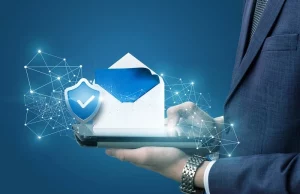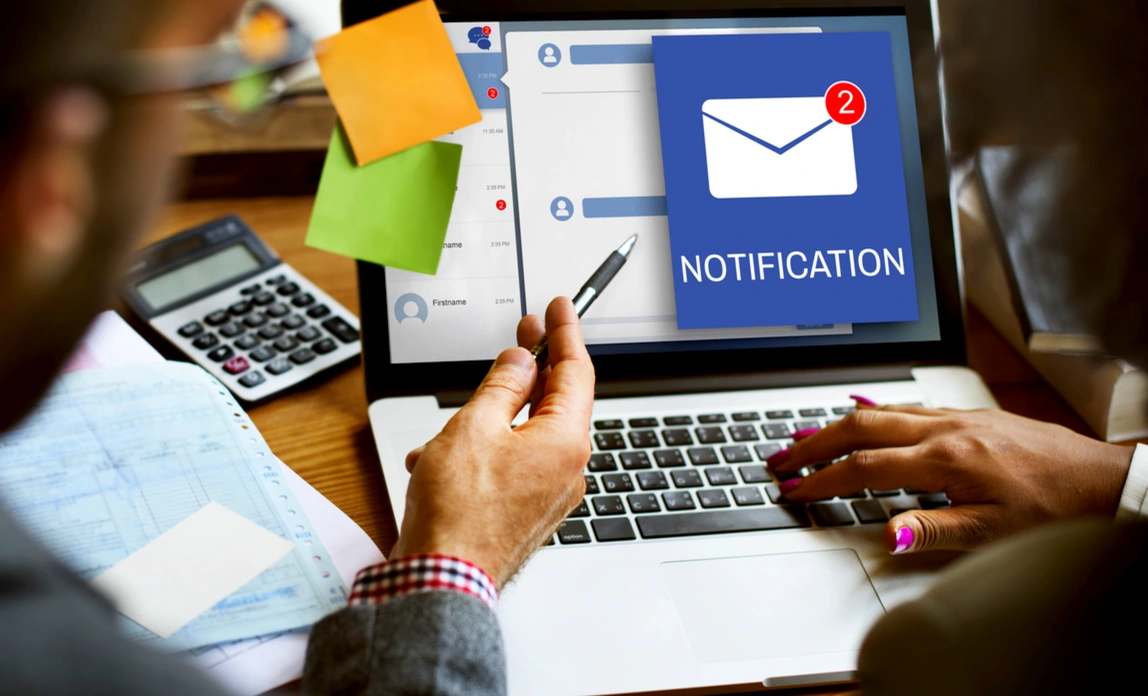For tech enthusiasts, prioritizing email security best practices is crucial. Understanding risks like phishing and malware is key. Encryption plays a vital role in safeguarding data integrity and privacy. Implementing strong password policies, such as multi-factor authentication, helps deter unauthorized access. Recognizing phishing attempts and securing attachments are essential steps. Regular audits and two-factor authentication further strengthen defense mechanisms. By following these best practices, tech enthusiasts can fortify their email security against cyber threats effectively.
Key Takeaways
- Implement end-to-end encryption for data protection.
- Regularly update encryption protocols for enhanced security.
- Train employees on encryption best practices.
- Utilize strong password policies and multi-factor authentication.
- Stay vigilant against phishing attempts and secure email attachments.
Understanding Email Security Risks
Understanding the risks associated with email security is paramount in today’s digital scenario, where cyber threats loom constantly. Common risks include phishing attacks, malware attachments, and unauthorized access. These threats can lead to data breaches, financial losses, and reputational damage. It’s crucial to stay informed about the evolving tactics used by cybercriminals to protect sensitive information and maintain a secure communication environment.
Importance of Email Encryption
Email encryption plays a vital role in safeguarding sensitive information by converting data into a coded format that only authorized recipients can access. By utilizing encryption methods, individuals can establish secure communication channels, ensuring that their emails remain confidential and protected from unauthorized access. This extra layer of security boosts data protection measures, making it significantly harder for cybercriminals to intercept and exploit valuable information.
Encryption Benefits Explained
Improving the security of electronic communications, particularly through encoding mechanisms, plays a crucial role in safeguarding sensitive information exchanged over the digital realm. Email encryption benefits include safeguarding data from unauthorized access, ensuring privacy, and maintaining the integrity of messages. By implementing encryption technologies, tech enthusiasts can reduce the risks associated with cyber threats and strengthen the overall security of their email communications.
Secure Communication Channels
By utilizing advanced encryption protocols, tech enthusiasts can strengthen the security of their email communications, ensuring that sensitive information remains safeguarded from unauthorized access. Email encryption guarantees that messages are encoded, making it nearly impossible for cybercriminals to intercept and decipher the content. This added layer of protection is crucial for securing confidential data shared over email channels, providing peace of mind for users.
Data Protection Measures
To fortify the security of digital communications, particularly in safeguarding sensitive information, implementing robust encryption mechanisms like email encryption is imperative.
- Utilize end-to-end encryption tools.
- Implement digital signatures for authenticity.
- Regularly update encryption protocols.
- Train employees on encryption best practices.
Implementing Strong Password Policies
When it comes to protecting your online accounts, enforcing strong password guidelines is crucial for ensuring the security of your personal information and sensitive data. Strong passwords should be intricate, unique, and regularly updated. Implementing multi-factor authentication adds an extra layer of security. Encourage users to avoid using easily guessable information such as birthdays or common words. Regular password audits can additionally help identify and address potential vulnerabilities.
Recognizing Phishing Attempts
Recognizing phishing attempts is important for maintaining email security. By being aware of phishing red flags such as suspicious links and requests for personal information, individuals can avoid falling victim to these deceptive tactics. Implementing measures like verifying sender identities and using email filters can help protect against phishing attacks.

Phishing Red Flags
Identifying phishing red flags is crucial for maintaining email security and protecting personal information from potential cyber threats.
- Look for mismatched URLs in email links
- Watch out for generic greetings instead of personalized messages
- Be cautious of urgent language prompting immediate action
- Check for poor grammar and spelling errors
Common Phishing Tactics
To improve your email security measures effectively, it is essential to acquaint yourself with the various deceptive tactics commonly used by cybercriminals in phishing attempts. These tactics often involve creating fake emails that mimic legitimate sources, using urgency or fear to prompt immediate action, and including malicious links or attachments. By understanding these common phishing tactics, you can better protect yourself from falling victim to such fraudulent schemes.
Protecting Against Phishing
In safeguarding against phishing attacks, a fundamental aspect lies in developing a keen awareness of common deceptive tactics employed by cybercriminals to trick unsuspecting individuals.
- Check sender’s electronic mail address for discrepancies
- Look for generic greetings or urgent language
- Avoid clicking on suspicious links
- Verify requests for personal or sensitive information
Securing Email Attachments
When it comes to safeguarding your digital messages, ensuring the protection of electronic mail attachments is a critical aspect that requires careful attention and implementation of strong measures. To secure electronic mail attachments, use encryption methods, be cautious of unexpected attachments, and scan all attachments for malware before opening. Implementing these practices will help prevent unauthorized access and potential security breaches, ensuring the safety of your electronic mail communications.
Regular Email Security Audits
Performing routine electronic mail security audits is a crucial practice in upholding the integrity and confidentiality of your digital communications.
- Scan for malware and phishing attempts regularly
- Review email forwarding rules for any unauthorized changes
- Check for unusual login activities and devices
- Verify the encryption settings for sensitive information exchange
Utilizing Two-Factor Authentication
Implementing Two-Factor Authentication boosts the security of your email accounts by necessitating an additional verification step beyond just a secret. This method typically requires something you remember (like a secret) and something you possess (like a code sent to your phone). By adding this extra layer of protection, Two-Factor Authentication significantly reduces the risk of unauthorized access to your sensitive information, providing a more secure email environment.
Frequently Asked Questions
How Can I Detect if My Email Account Has Been Compromised?
Detecting if your email account is compromised involves monitoring for unusual activities like unrecognized logins, unexpected password alterations, or unfamiliar emails in your sent folder. Use security tools, activate two-factor authentication, and regularly review login history for signs of unauthorized access.
Are There Any Email Security Measures Specifically for Mobile Devices?
Email security measures for mobile devices are important. Implementing measures like using secure networks, enabling two-factor authentication, keeping software updated, and using encrypted communication apps can improve the security of your mobile email experience.
What Steps Can I Take to Protect My Emails From Being Intercepted?
To protect emails from interception, utilize encryption techniques like PGP or S/MIME, utilize secure email services, activate two-factor authentication, and regularly update your email client. Avoid clicking on suspicious links or attachments and be cautious of phishing attempts.
How Can I Ensure the Security of Emails Containing Sensitive Information?
To guarantee the safety of emails containing sensitive information, utilize encryption protocols, leverage secure networks, implement multi-factor authentication, regularly update security software, conduct employee training on phishing awareness, and establish strict access controls. These measures strengthen email security thoroughly.
Is It Necessary to Update My Email Security Practices Regularly?
Regularly updating your email security practices is vital in safeguarding sensitive information. Cyber threats evolve constantly, making outdated measures vulnerable. Stay proactive by incorporating the latest security protocols, software updates, and best practices to reduce risks effectively.
Conclusion
In e, implementing email security best practices is crucial for safeguarding sensitive information from cyber threats. By understanding the risks, utilizing encryption, enforcing strong password policies, and staying vigilant against phishing attempts, individuals can boost the security of their email communications. Regular audits and the use of two-factor authentication further strengthen the defense against unauthorized access. By following these strategies, tech enthusiasts can create a more secure email environment and protect their personal and professional data effectively.
You May Also Like:






